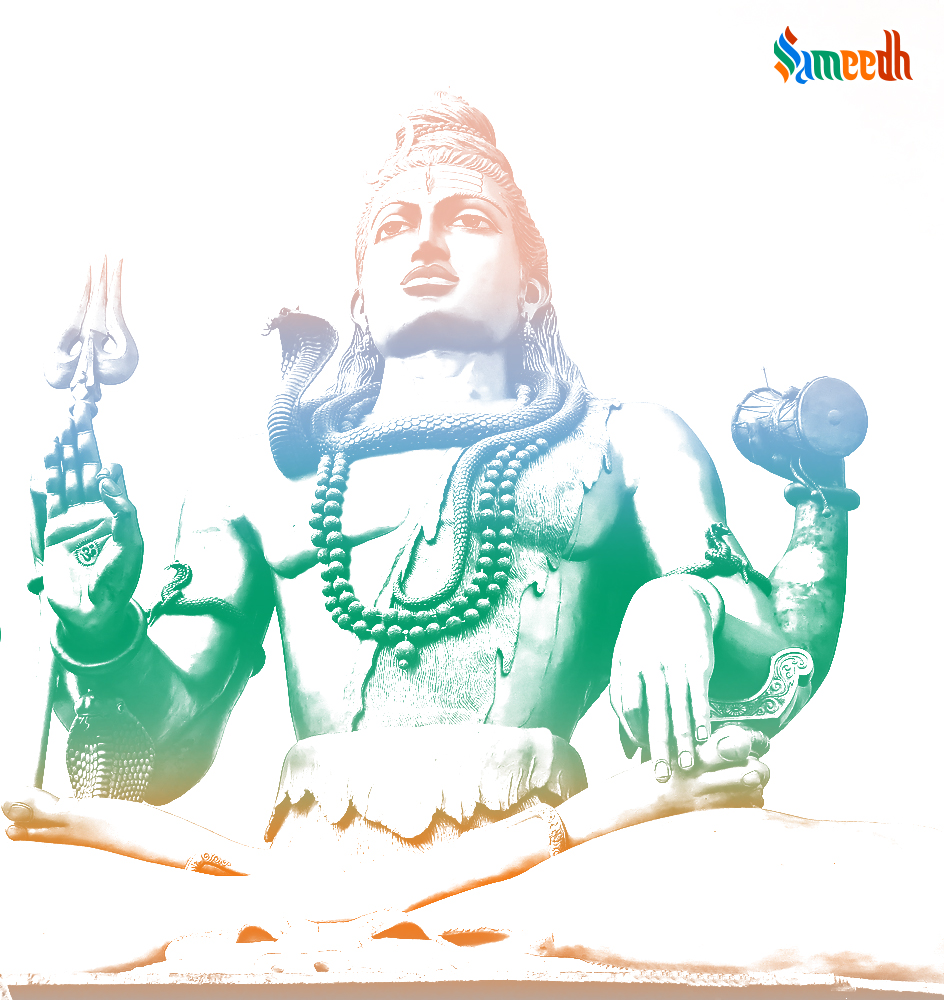We may have heard or recited this mantra. Why is it referred to as the Maha Mrityunjay mantra? Does it protect lives and what is the hidden significance of this mantra in Hinduism?
||oṃ tryambakaṃ yajāmahe sugandhiṃ puṣṭi-vardhanam||
||urvārukam iva bandhanān mṛtyor mukṣīya mā ‘mṛtāt||
MEANING
Om. We worship the ‘three-eyed Lord’ (Shiv) who is fragrant and who nourishes the devotees. By worshipping him, may we be liberated from death for the sake of immortality, just as a ripe cucumber easily separates itself from the binding stalk.
EXPLANATION
The mantra is a prayer to Lord Shiva who is addressed as Shankar and Trayambak. Shankar literally means ‘Shan’ (blessings) and ‘Kar’ (the Giver). Trayambak is the three-eyed-one (where the third eye signifies knowledge, which destroys ignorance and releases us from the cycle of death and rebirth).
INTRODUCTION
This mantra is referred to as the ‘Maha Mrityunjay Mantra’, the ‘Rudra Mantra’ or the ‘Tryambakam Mantra’; and it is sometimes known as the ‘Mrit-Sanjivini Mantra because, it is a component of the ‘life-restoring’ practice given to the primordial sage Shukracharya after he had completed an exhaustive period of austerity. The ‘Maha Mrityunjaya Mantra’ is hailed by the sages as the heart of the Veda. Along with the Gayatri mantra it holds the highest place among the many mantras used for contemplation and meditation.
ORIGIN
According to a legend, Markandey was the only one on the Earth who knew this mantra. Once Moon was in trouble as the result of a curse by King Daksha. Markandey is said to have given the Mahamritryunjay Mantra to Sati, Daksha’s daughter, for the Moon. While according to another legend, this is the ‘Bij Mantra’ revealed to Rishi Kahola. This mantra was given by Lord Shiv to the sage Shukracharya, who taught it to Rishi Dadhichi, who in turn gave it to King Kshuva through whom it reached the Shiv Puran. Its patron devata is the Rudra, i.e., Shiva in his fiercest and most destructive roop or aspect.
It is mentioned in 3 of our 4 Veds – a) the Rig Ved (Mandala-7 sukt-59 mantra-12 | Rishi: Vashisth), b) the Yajur Ved (III.60), and c) the Atharva Ved (XIV.1.17)
SIGNIFICANCE
Hindus believe that recitation of the mantra ignites a fire within that consumes all negativity and purifies the entire system. It is also said to have a strong healing power and can cure diseases declared incurable even by the doctors. Devotees strongly believe that proper recitation of the Maha Mrityunjaya rejuvenates, bestows health, wealth, long life, peace, prosperity and contentment. It is said that chanting of Shiv Mantra generates divine vibrations that ward off all the negative and evil forces and creates a powerful protective shield. Besides that, it is said to protect the one who chant it from accidents and misfortunes of every kind. Recitation of the mantra creates a vibration that pulsates through every cell, every molecule of the human body and tears away the veil of ignorance.
It is generally chanted after smearing’ Vibhuti’ (holy ash) over various parts of the body and is used while performing ‘Jap’ or ‘Hom’ (havan). A continuous repetition of the mantra constitutes a Jap, the practice of which develops concentration that leads to a transformation of awareness. The ‘Gayatri Mantra’ is meant for purification and spiritual guidance whereas, the ‘Maha Mrityunjay Mantra’ is meant for healing, rejuvenation and nurturance. It is said to be beneficial for mental, emotional and physical health and to be a moksha mantra which bestows longevity and immortality.
BEST TIME TO CHANT
Chanting the Maha Mrityunjaya Mantra with sincerity, faith and devotion in the ‘Bramha Muhurat’ (just prior to the break of dawn) is considered to be very beneficial, however performing Maha Mrityunjaya jap at any time in a pure environment is beneficial. It helps discover the happiness that’s already within.
To know more about Hinduism, its places of religious importance, pilgrimage routes, its famous temples, etc. or for any special need like conducting a pooja at your home please visit our website Sameedh.

